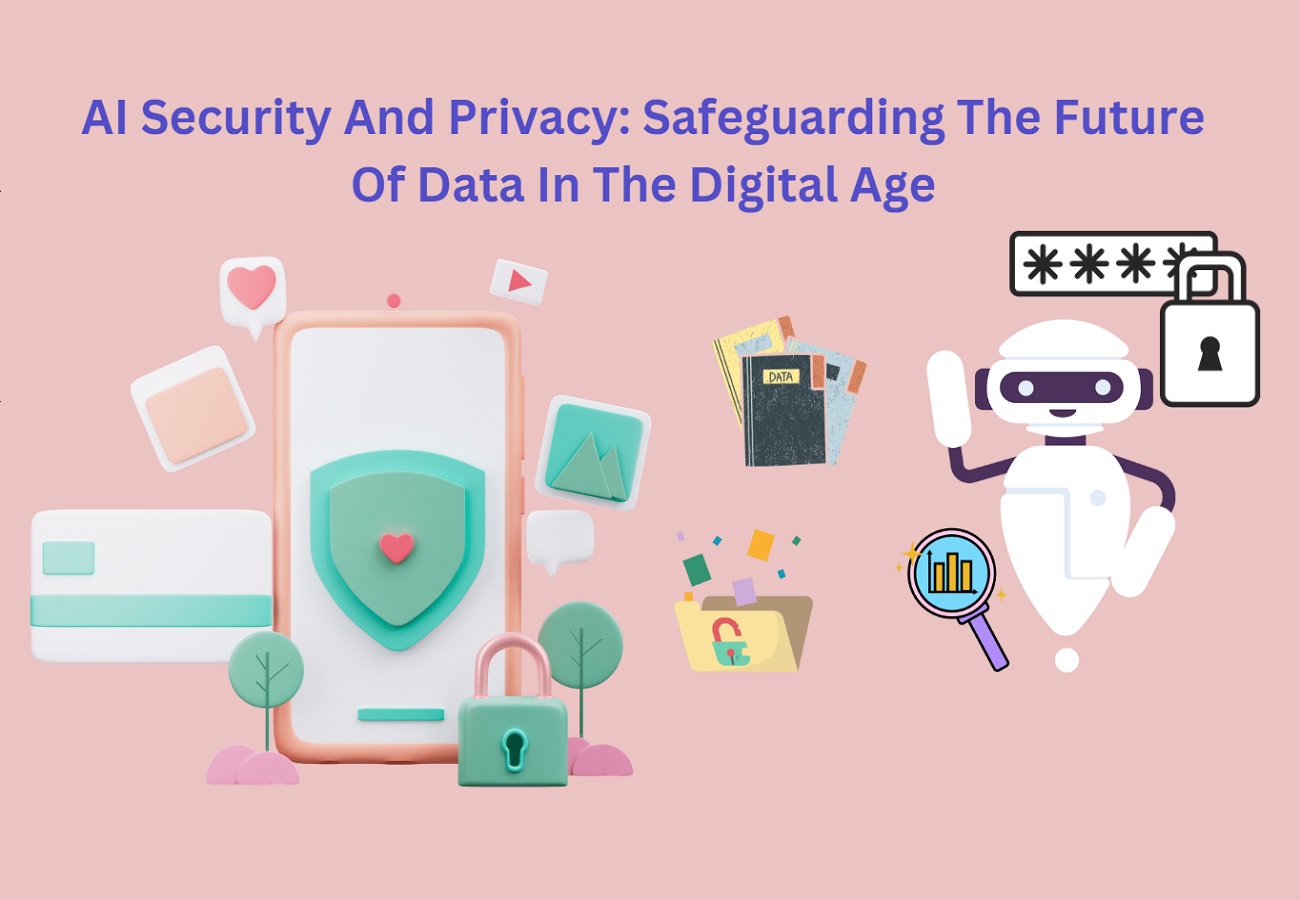
Evolution of Digital Privacy and Security
Historical Overview
The journey of digital privacy and security is a fascinating tale that traces back to the dawn of computing. In the early days, privacy was largely an afterthought as machines, and their capabilities were just beginning to emerge. Personal data was minimal – merely names and addresses. However, as usage grew, so did the need for protection.
- 1970s: Introduction of the first privacy laws, like the Fair Information Practice Principles (FIPPs), that laid the groundwork for user consent and data protection.
- 1980s: The rise of personal computers brought forward issues like unauthorized access and data breaches.
- 1990s: The internet exploded, with users sharing unprecedented amounts of personal information online, heightening privacy concerns.
Impact of Technological Advancements
Fast forward to today, where technological advancements have reshaped how we view and approach digital privacy.
The explosion of social media, smartphones, and cloud computing has created a double-edged sword in the arena of privacy. For instance, while data-sharing apps enhance connectivity, they often compromise security.
- Surveillance Technologies: Modern surveillance cameras and tracking software have made it easier for entities to monitor users, raising ethical questions.
Personal anecdotes highlight this evolution; a revealing experience shared by many is when they realized their smart devices could always be listening. This exemplifies how rapid technological progress simultaneously benefits and challenges our quest for digital privacy. Overall, we’re witnessing a critical intersection of innovation and the pressing need for robust security measures.

Current State of Digital Privacy
Data Collection Practices
In today’s digital landscape, data collection practices have become ubiquitous. Companies gather a vast array of information—from browsing habits to purchase history—with little awareness among users about what’s being collected. This phenomenon is often described as “surveillance capitalism.”
- Types of Data Collected:
- Personal identifiers (names, email addresses)
- Behavioral data (click patterns, social interactions)
- Location data (GPS tracking from devices)
A striking example comes from a popular social media platform, where users may consent to data collection without fully understanding the implications. Many learn, often too late, that the very conveniences they enjoy come at the cost of their privacy.
Privacy Concerns in the Digital Age
As our online lives expand, privacy concerns have intensified. Users are increasingly aware yet increasingly vulnerable, caught in a whirlwind of data breaches, identity theft, and unauthorized access.
Notably, the high-profile cases of companies exposed for mishandling personal information have left many feeling anxious about their own data security.
- Common Concerns:
- Data breaches affecting millions
- Manipulative advertising practices
- Difficulty in managing personal information across platforms
These challenges highlight the pressing need for consumers to take an active role in protecting their privacy. Engaging with tools like privacy settings or data management apps can empower individuals and reinforce their digital safety—as crucial in this age of information as locking the front door was in earlier times.
Legal Frameworks and Regulations
GDPR and its Implications
As digital privacy concerns mount, the General Data Protection Regulation (GDPR) stands as a landmark piece of legislation in the European Union. Enacted in 2018, GDPR aims to safeguard personal data and enhance individuals’ control over their information, significantly impacting how businesses operate.
- Key Principles of GDPR:
- Consent: Users must provide explicit consent for their data to be processed.
- Right to Access: Individuals can access their data and understand how it is used.
- Data Portability: Users can transfer their data from one service provider to another.
Reflecting on a personal experience, many have shared how GDPR has encouraged them to examine privacy settings on social media platforms more closely, appreciating the newfound clarity about who has access to their information.
Key Privacy Laws Around the Globe
While GDPR has set a high standard, various countries are developing their own privacy laws to address the evolving landscape of data protection:
- California Consumer Privacy Act (CCPA): This landmark legislation grants California residents enhanced rights over their data, allowing them to opt-out of data sales and request details about its use.
- Personal Information Protection and Electronic Documents Act (PIPEDA) in Canada: This law establishes guidelines for how businesses should collect, use, and disclose personal information.
Such regulations not only protect consumers but also enforce accountability among organizations. This mosaic of legal frameworks underscores the growing recognition that privacy matters in the digital age and encourages a culture of respect towards individual data rights.

Technological Solutions for Privacy and Security
Encryption and its Role
As we delve deeper into the realm of privacy and security, encryption emerges as a crucial technology. By converting plaintext data into a coded format, encryption safeguards sensitive information from unauthorized access. It is essentially the digital equivalent of locking your valuables in a safe.
- Types of Encryption:
- Symmetric Encryption: Utilizes a single key for both encryption and decryption. Fast but requires secure key management.
- Asymmetric Encryption: Involves a pair of keys—public and private—offering enhanced security for transactions.
Reflecting on experiences from friends who are frequent online shoppers, many express comfort knowing that their credit card details are encrypted during transactions, adding an extra layer of trust in e-commerce interactions.
Biometric Authentication Technologies
In addition to encryption, biometric authentication technologies are transforming the way we secure our personal information. By using unique biological characteristics—such as fingerprints, facial recognition, and iris scans—biometrics provides a more secure method of verifying identity.
- Advantages of Biometric Authentication:
- Difficult to replicate or forge, enhancing security.
- User-friendly—most people already carry fingerprint readers or facial recognition capabilities on their smartphones.
Many users have shared how convenient it is to unlock their devices just by a glance or a touch. This seamless integration of biometric data affirms that technology not only enhances security but also enriches user experience in the digital landscape. Together, encryption and biometric solutions represent pivotal advancements in the ongoing battle for digital privacy, ensuring that users can confidently navigate their online environments.

Threats to Digital Privacy and Security
Cybersecurity Risks
As technological advancements evolve, so do the risks associated with digital privacy and security. Cybersecurity risks are at an all-time high, with malicious actors continuously exploring new ways to exploit vulnerabilities.
- Common Cybersecurity Threats:
- Malware: Malicious software designed to disrupt, damage, or gain unauthorized access to systems.
- Ransomware: A type of malware that encrypts user data, demanding payment for access.
- Phishing: Fraudulent attempts to obtain sensitive information by disguising as a trustworthy entity.
A personal story shared by a colleague highlights the anxiety of waking up to find unauthorized transactions on their bank account. Such experiences serve as stark reminders of the importance of robust cybersecurity measures in protecting personal data.
Social Engineering Attacks
Compounding cybersecurity risks are social engineering attacks, which exploit human psychology rather than technological vulnerabilities. These deceptive tactics are aimed at manipulating individuals into divulging confidential information.
- Common Tactics:
- Phishing Emails: Emails crafted to look legitimate, prompting users to enter sensitive information on fake websites.
- Pretexting: Piercing through trust by creating a fabricated scenario to obtain personal details.
By recounting an experience where a friend received a seemingly genuine call from their “bank,” only to later discover it was a scam, the shocking reality of these attacks becomes evident. Social engineering attacks remind us that technological safeguards alone aren’t sufficient; staying vigilant and educated about these threats is essential to fortifying our digital defenses. Together, understanding both cybersecurity risks and social engineering strategies can empower users to navigate the digital landscape more safely.

Privacy in the Era of Big Data and AI
Data Mining and Profiling
In the contemporary landscape, the intersection of big data and artificial intelligence (AI) has transformed how organizations gather and utilize personal information. Data mining and profiling are pivotal processes that analyze vast datasets to identify patterns and insights about individual behaviors.
- Key Aspects of Data Mining:
- Behavioral Targeting: Tailoring advertising to users based on their online activities.
- Predictive Analytics: Anticipating future behaviors or trends using historical data.
A friend recently shared how they felt unnerved when an advertisement popped up for a product they had only discussed privately. This scenario underscores the powerful reach of data mining, prompting many to question the ethics of data use and personal privacy.
Ethical Considerations in AI Development
As AI technologies evolve, ethical considerations surrounding data privacy have come to the forefront. Developers are now faced with crucial questions about consent, transparency, and accountability.
- Core Ethical Considerations:
- Informed Consent: Are users fully aware of how their data is being used?
- Bias and Fairness: How do we ensure that AI systems are not perpetuating existing biases?
Reflecting on discussions with peers, it’s clear that many are increasingly uncomfortable with how AI utilizes their data. They advocate for greater transparency in AI development processes, highlighting the necessity for ethical standards that prioritize user privacy. In this fast-paced era of big data and AI, balancing innovation with ethical responsibility is crucial for maintaining trust and protecting individual rights.

The Future of Privacy and Security Technologies
Blockchain for Privacy Protection
As we look to the future of privacy and security technologies, blockchain emerges as a promising solution. This decentralized ledger technology has the potential to enhance data security while giving users greater control over their information.
- Key Features of Blockchain:
- Decentralization: Reduces the risk of single points of failure, making data breaches less likely.
- Transparent Transactions: Every transaction is recorded and publicly accessible, improving accountability.
- Smart Contracts: Automated contracts that execute when predefined conditions are met, which can enhance user privacy and reduce fraud.
A personal anecdote from a tech-savvy friend illustrates the fascination with blockchain’s potential. They enthusiastically shared how projects are underway to use blockchain for secure voting, ensuring transparency and voter anonymity—ideas that resonate with many looking for trustworthy systems in our increasingly digital world.
Quantum Cryptography and its Potential
Another frontier in securing digital privacy lies in quantum cryptography. This advanced field utilizes the principles of quantum mechanics to create encryption methods that are nearly impossible to crack.
- Benefits of Quantum Cryptography:
- Unbreakable Encryption: Offers theoretically perfect security by using quantum bits (qubits) that can exist in multiple states.
- Key Distribution: Quantum Key Distribution (QKD) allows for secure communication, even over long distances.
The excitement in tech circles is palpable, especially among cybersecurity professionals who recognize that quantum cryptography could redefine how we approach data security. Many are eagerly discussing potential applications across industries, from secure financial transactions to private communications. As such revolutionary technologies develop, they hold the promise of addressing many of today’s pressing privacy concerns, paving the way for a more secure future.

Balancing Privacy and Innovation
Challenges in Finding the Right Balance
As we navigate through the complexities of the digital landscape, balancing privacy and innovation proves to be a formidable challenge. On one hand, technological advancements fuel creativity and efficiency; on the other, they often involve the collection and utilization of personal data that can infringe on privacy rights.
- Key Challenges:
- Data Minimization vs. Functionality: Striking a balance between collecting enough data for personalized services while minimizing unnecessary data collection.
- User Awareness: Many users remain unaware of their rights and the extent of data collection, leading to uninformed consent.
A colleague recently shared their frustrations about constantly agreeing to privacy policies without understanding them. This highlights the broader struggle to foster an environment where innovation does not come at the cost of privacy.
Collaborative Efforts for a Secure Future
To address these challenges, collaborative efforts among stakeholders—governments, businesses, and consumers—are essential. Each party must play their role in creating a secure, transparent digital ecosystem.
- Initiatives for Collaboration:
- Public-Private Partnerships: Joint efforts can lead to the development of sustainable privacy solutions while promoting technological advancements.
- Consumer Education Programs: Raising awareness about data privacy rights empowers users to make informed choices in the digital space.
Many advocates for privacy emphasize the importance of conversations between tech companies and consumers. Sharing success stories, like businesses adopting ethical data practices, can set a positive precedent. Ultimately, fostering a culture of collaboration not only protects individuals but also spurs responsible innovation that benefits society as a whole, ensuring that the digital future is safe and enriching for everyone involved.

Emerging Trends in Digital Privacy
Privacy-enhancing Technologies
In the evolving realm of digital privacy, emerging trends are giving rise to innovative privacy-enhancing technologies (PETs). These tools are designed to protect user data without compromising the functionality of services.
- Types of Privacy-enhancing Technologies:
- Anonymization Tools: Techniques that remove personally identifiable information (PII) from data sets, helping maintain user anonymity.
- Secure Multiparty Computation: This allows parties to collaborate and analyze data without revealing their raw data, ensuring privacy even while deriving insights.
A friend who works in data analytics recently shared how they utilize PETs to anonymize sensitive information during projects. This not only aligns their work with ethical standards but also earns the trust of clients and stakeholders.
User Empowerment in Privacy Control
As awareness of privacy issues grows, user empowerment has emerged as a pivotal trend. Individuals are increasingly advocating for control over their personal information and demanding greater transparency from companies.
- Key Empowerment Strategies:
- Privacy Settings Management: Platforms are now offering easier access to privacy settings, allowing users to manage who can see their information.
- Decentralized Identity Solutions: These solutions give users more control over their digital identities, enabling them to share information selectively.
Reflecting on personal experiences, many users have expressed relief at discovering tools that enable them to reclaim ownership of their data. These advancements in user control not only enhance individual privacy but also cultivate a culture of responsibility among organizations. Moving forward, the convergence of privacy-enhancing technologies and user empowerment is set to reshape the digital landscape, fostering a more secure environment for everyone.

Conclusion and Future Outlook
Recap of Key Points
As we conclude our exploration of digital privacy and security, it’s essential to summarize the pivotal themes we’ve discussed. We’ve journeyed through the evolution of privacy technologies, the impact of big data and AI, and the challenges of striking a balance between innovation and individual rights.
- Key Takeaways:
- The rise of privacy-enhancing technologies (PETs) and user empowerment is reshaping how individuals engage with data.
- Legislative frameworks like GDPR and CCPA are crucial in setting standards for data protection.
- Collaborative efforts among stakeholders are key to a safer digital ecosystem.
Personal stories shared throughout highlight the collective anxieties around data security and privacy, reinforcing the urgency of these discussions.
Predictions for the Future of Digital Privacy and Security
Looking ahead, several predictions can be made regarding the future of digital privacy and security.
- Increased Adoption of Advanced Technologies: Expect a surge in quantum cryptography and AI-driven security solutions that will enhance protection.
- Stricter Regulations: Governments worldwide may implement more rigorous laws to keep pace with emerging threats.
As individuals become more informed, a shift towards greater involvement in privacy discussions will likely emerge, with the potential to drive meaningful change. The future of digital privacy and security appears promising yet intricate, requiring ongoing dialogue and adaptation as technology continues to evolve. Together, we can strive for a digital landscape where privacy is not just a privilege, but a fundamental right upheld for all.

